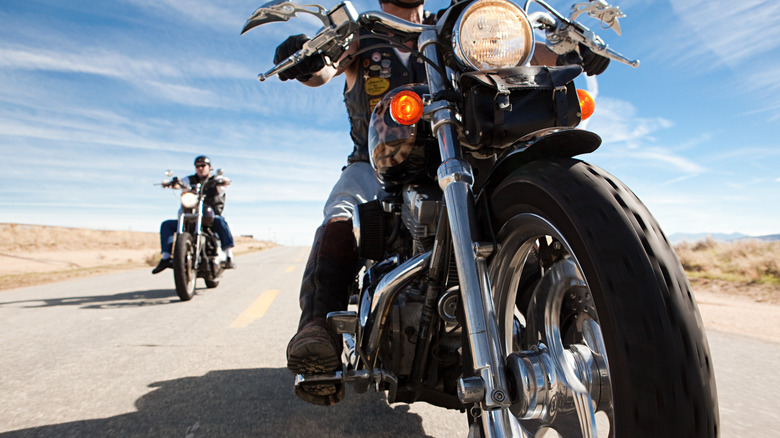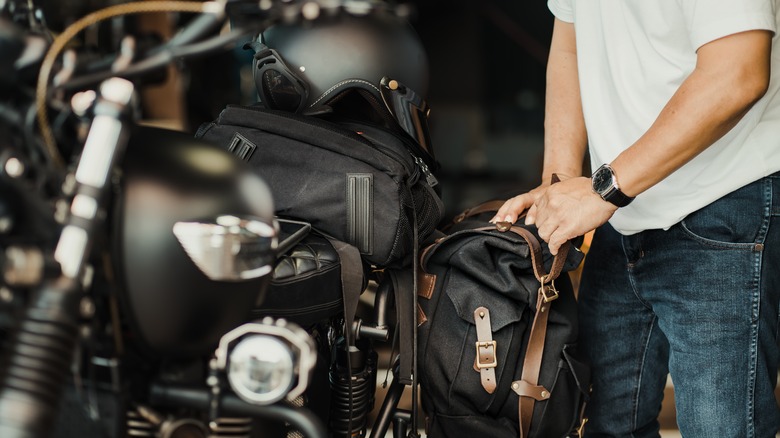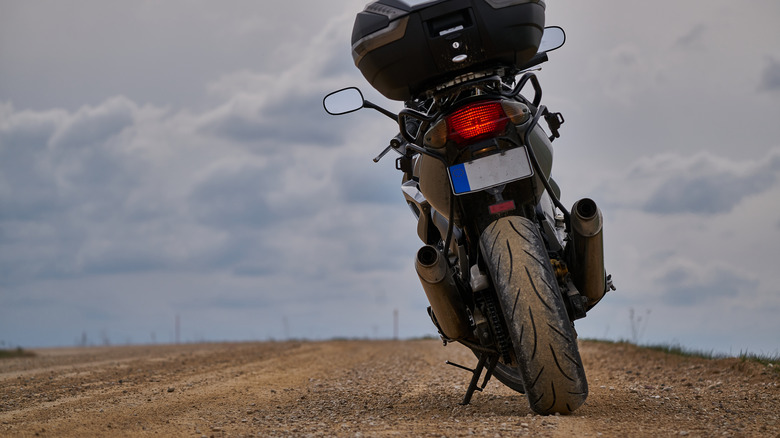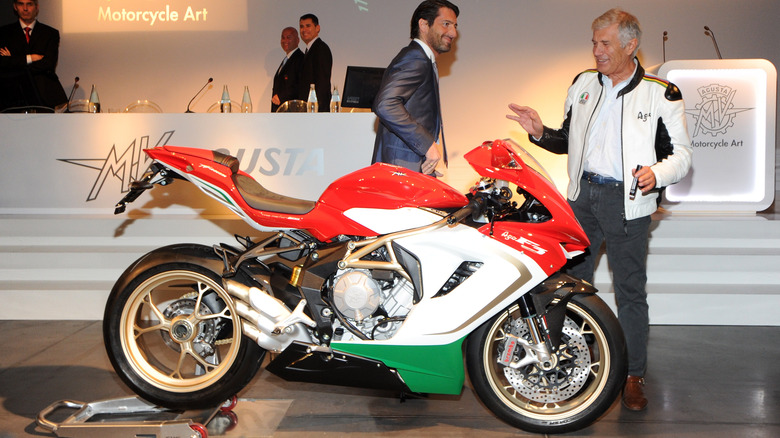Touring Bikes Explained: How They're Different From Other Motorcycles
All drivers and riders need to select the vehicle that's right for them. A racing veteran wouldn't attempt a new land speed record in a Ford Fiesta any more than somebody who mostly only does the grocery store and school runs would choose a Koenigsegg Jesko Absolut in which to do so.
With this in mind, somebody new to the wonderful world of motorcycles may find it difficult to narrow down their choices. They'll certainly have a budget in mind and will need some idea of a preferred style, manufacturer, engine size, color scheme, and so on. There's much more to consider on top of these factors, though. Do you want something smaller and easier to handle, like a scooter? Maybe you're looking for adventure and want something stronger that can cope well with going off-road. Another option you're sure to hear motorcycle enthusiasts talk about is the touring motorcycle.
In this piece, we'll take a look at what's meant by touring bike, the strengths of such a machine, and what separates it from other common types of motorcycle.
An introduction to the touring bike
On the most basic level, one large boon cars tend to have over motorcycles is storage space. Quite clearly, bikes don't boast sizable trunks or nearly as many large compartments and pockets, making such space a precious commodity for the rider. Nor, of course, do bikes have the luxury of wide, comfortable seats that other vehicles offer. You may think that longer journeys are less practical for motorcycles. This is a large part of the reason for touring bikes.
As the name suggests, such bikes are equipped for journeys with a capital J. As a general rule, they have powerful engines and are designed with more of a focus on ergonomics. It can easily become uncomfortable to ride for hours on a motorcycle. A touring bike typically allows the rider to adopt a more natural stance, reducing the discomfort of lengthier travel.
Touring bikes are created to be larger and more conveniently store the rider's property, allowing travelers to take their equipment on the road with them should it be necessary. It's a role that may seem ill-suited to a conventional motorcycle, but top boxes and panniers make touring machines much more versatile than you might think.
Perhaps the idea of a touring bike might fit your needs. As with any other type of vehicle, though, they have positives and negatives that should be considered.
More of the pros, and the cons, of touring bikes
A touring motorcycle may have a lot of weight to carry, depending on the gear riders plan to take on their travels. This may mean that more of a heavyweight frame is recommended. After all, the goal isn't just to make long journeys but to do so comfortably and sustainably. Not only must a touring bike's body be up to the task, but its engine, too. BikeSocial suggests that at least 600cc is a must for a solo tourer to sustain long journeys, and 900cc and beyond is a must for those who plan to travel with a passenger.
Combine this with the formidable torque typical of such a machine, and it's clear that touring bikes are worthy picks for those seeking a big, roaring ride. This isn't to say that they're the greatest racers around. Naturally, they tend to be larger models and are often laden with supplies and equipment, so they are not lightweight speedsters.
These same factors can also make them rather more unwieldy when outside of their favored terrain of long, glorious stretches of road. If you enjoy motorcycle riding for the agility, maneuverability, and small body that enables you to nip into spaces you might otherwise miss out on, a touring bike isn't going to deliver that same freedom. However, the freedom of the wide open road is one thing you can count on with a tourer.
Alternative options
In selecting a touring bike, riders don't necessarily have to sacrifice performance for long-distance comfort and ample room for their belongings. The Turismo Veloce, from MV Agusta, is one example of a sports tourer, a model that offers a pace of 230 kph and 110 horsepower but also panniers in the sides. It also provides cruise control, a desirable feature among touring bikes that, again, enhances the comfort and usability of the vehicle and emphasizes the long-journey design.
Adventure bikes are a similar prospect that may be considered, offering the same long-distance capacities with the potential twist of leaning more into off-road travel. They often boast lighter frames.
Touring bikes can be some of the most powerful and formidable motorcycles. In their long-distance specialism, they challenge certain attitudes about what bikes are and aren't capable of doing. By virtue of this, they won't be suited to everybody, but for riders who enjoy their robust charms, they can be hardy companions for years to come.



